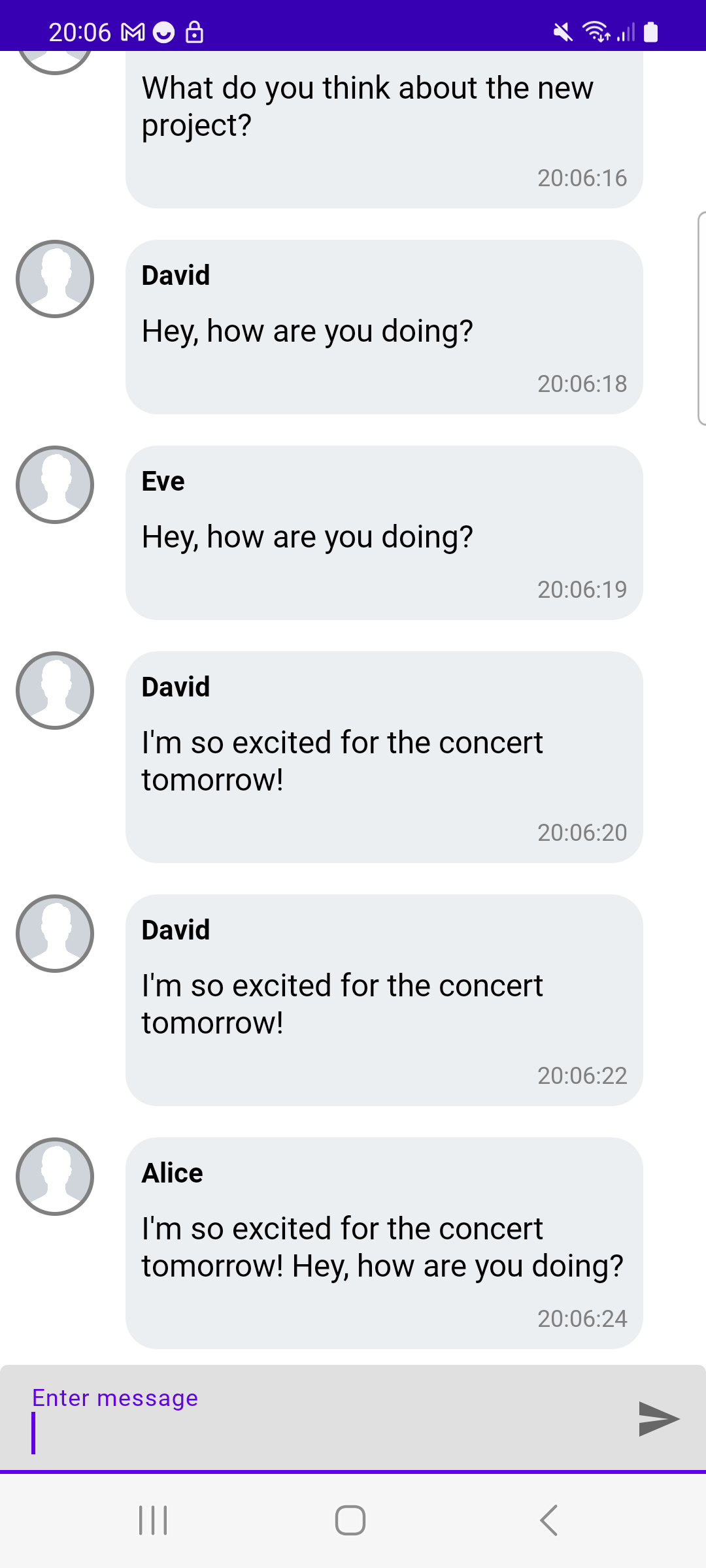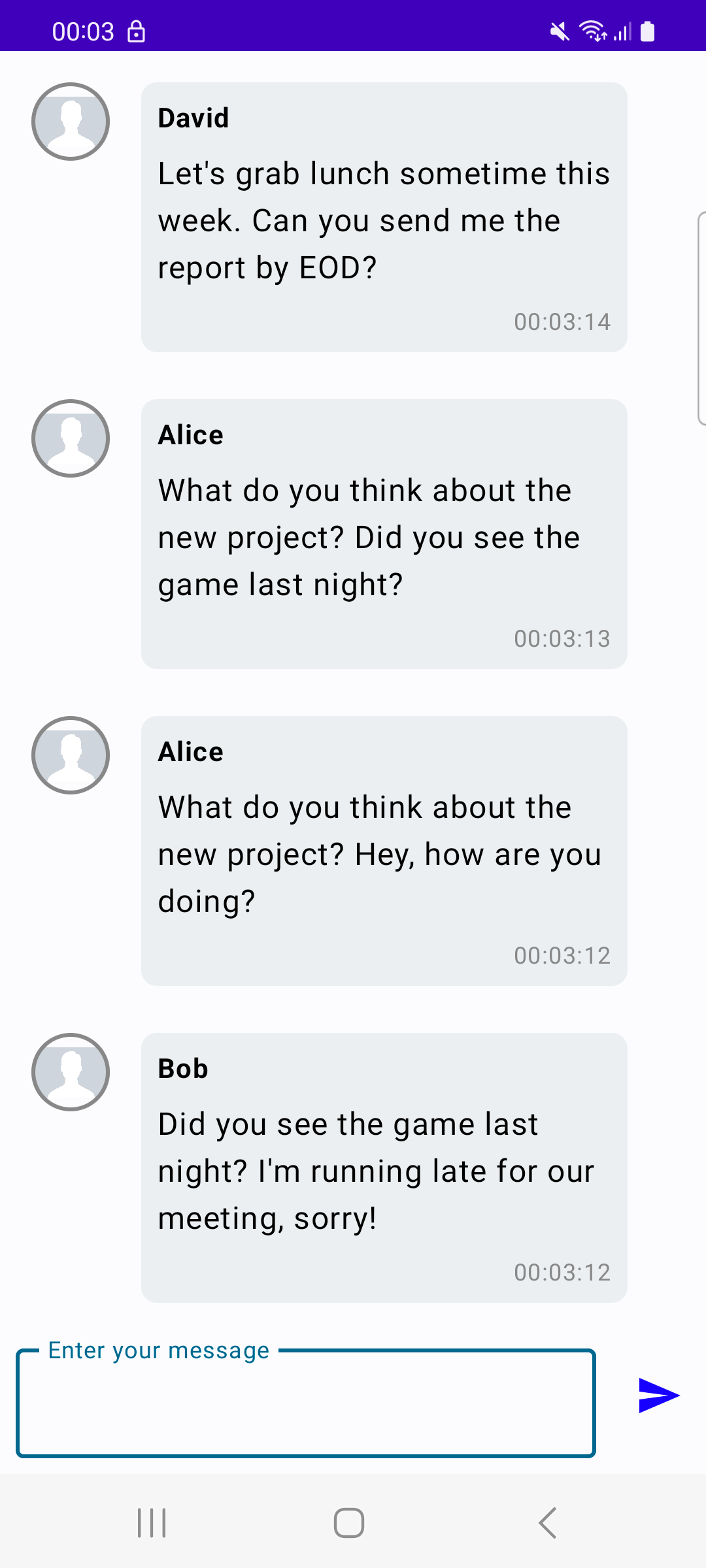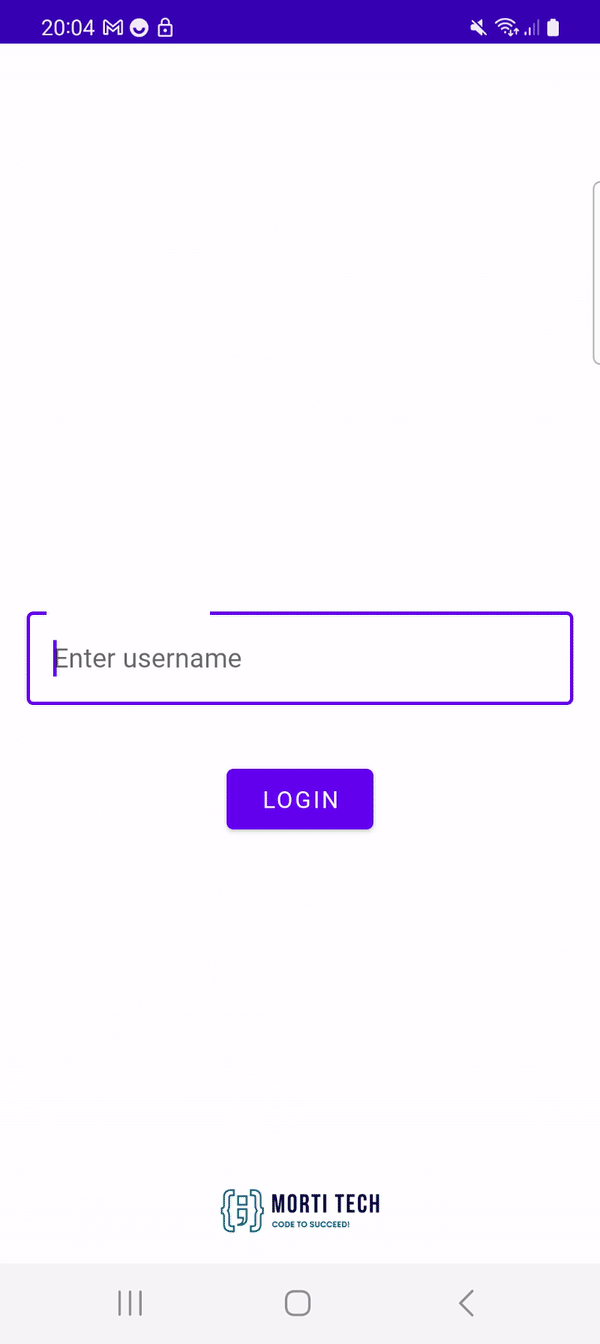This is an Android chat application built using Kotlin and Kotlin Flow. The application allows users to send and receive messages in a chat room.
- Real-time messaging using Kotlin Flow.
- Users can send and receive messages in a chat room.
- Simple user interface with a clean and modern design.
This project contains four modules
:ui:legacy, demonstrates of the Android chat using legacy android XML layouts:ui:compose, demonstrates of the Android chat using Jetpack Compose layouts:ui:core, share module for both legacy and compose modules with sharing resources:data, data modules for providing chat messages, and submitting outgoing messages using a repository
- Android Architecture Components: ViewModel
- Kotlin Coroutines.
- Kotlin Flow.
- Material Design Components.
1- Clone the repository:
git clone https://github.com/mo0rti/android-blueprint-kotlin-flow-chat.git- Open the project in Android Studio.
- Build and run the application on an emulator or physical device.
- Launch the application.
- Enter a username and click on the login button to enter the chat room.
- Type a message in the text field at the bottom of the screen and click on the send button to send the message.
- Incoming messages will appear in the chat room in real-time.
Contributions to this project are welcome. To contribute, please follow these steps:
- Fork the repository.
- Create a new branch.
- Make your changes and commit them.
- Push your changes to your fork.
- Create a pull request.
- Please ensure that your pull request follows the project's coding style and that it includes appropriate tests.
The Kotlin Flow Chat Application is a great project to learn Kotlin SharedFlow because it demonstrates how to use SharedFlow to build a chat application that supports real-time messaging. Here are brief explanations of the three main classes in the project:
The ChatRepository class is responsible for managing the chat messages. It provides methods to send and receive chat messages and exposes a SharedFlow of incoming messages. The incomingMessages flow emits incoming chat messages as they arrive and can be observed by clients to display the chat history. The sendMessage method sends a chat message to the server. It takes a username and content as input parameters and emits a new ChatMessage with MessageType.OUTGOING. The simulateIncomingMessages method simulates incoming chat messages for testing purposes. It emits a random chat message every 500-2000 milliseconds until a fixed number of messages is reached.
The ChatViewModel class is responsible for managing the chat messages and providing an interface for the UI to interact with the chat. It provides a sendMessage method to send chat messages and exposes a SharedFlow of incoming messages. The incomingMessages flow emits incoming chat messages as they arrive and can be observed by clients to display the chat history. The sendMessage method delegates to the ChatRepository to send the message to the server. The method takes a username and content as input parameters and forwards them to the repository for processing.
The ChatAdapter class is responsible for displaying the chat messages in the RecyclerView in the ChatActivity. It extends the ListAdapter class and implements the DiffUtil.ItemCallback interface to efficiently handle changes in the list of chat messages. The addMessage method is used to add a new chat message to the list of messages and update the UI.
Overall, this project is a great example of how to use Kotlin SharedFlow to build a real-time messaging feature in an Android application. It demonstrates how to use the MutableSharedFlow and SharedFlow classes to emit and observe messages, and how to use coroutines to manage concurrency and perform asynchronous operations. It also shows how to use the ViewModel architecture component to separate the UI and data layers of the application and how to use the ListAdapter class to efficiently handle changes in the list of chat messages.




